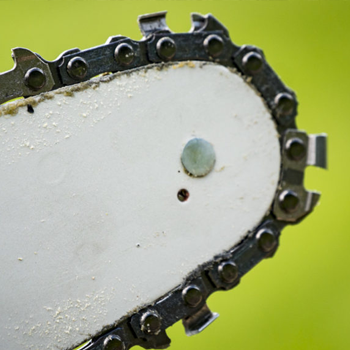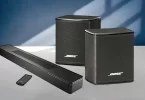Do you know the market share of chainsaws is estimated to cross $260.52 million during 2020-24? Most professionals and DIYers own a chain saw but, do you know how to change a chainsaw blade? A chainsaw is a powerful tool for cutting wood, and if you do not take care of it, the chain will dull quickly.
Over time, this can cause corrosion, leading to breakages or other problems with your saw that could result in injury. We shall now talk about the ways you can replace chainsaw chains effortlessly.
The Aspects of Chainsaw:
The guide bar on your chainsaw plays a vital role in how well it cuts. We will show you the best way to measure and adjust them so that they work at their peak potential.
In addition, the pitch, gauge and drive links are all critical for checking the health of your chainsaw. You should also verify the length since it can differ from manufacturer to manufacturer.
Fitting a chain to the guide bar is essential for safety. Furthermore, it is also vital that you use chains that fit your particular equipment, and not all will work on every type of machine, so make sure yours are perfect before cutting.
How to Replace a Chainsaw Chain?
It is never easy to do a good job, but you will be able to make the process much easier with these tools. The following are necessary for this task:
🔹 A socket wrench
🔹 Flathead screwdriver
🔹 Replacement chain
🔹 Chainsaw
STEP 1: How to Change a Chainsaw Blade – Remove the Old Chain
You will have to remove the two nuts holding every component together to start. Use your socket wrench and unscrew them, so they are in an unlocked position. You can now easily access the chain to replace it without any hassle.
However, if the chainsaw comes with an attached brake, disengage it before starting your project. If not, there will be some difficulty in reinstalling the safety device after completion of work.
STEP 2: Release the change a chainsaw blade Tension
With a quick tug on the nose of your guide bar, you can easily release it from its mount. The chain will become slack and removable with no more effort.
STEP 3: Loosen the Tensioning Screw
Locating the tensioning screw is usually a quick and easy task. Simply find it on your guide bar and loosen it with your flathead screwdriver enough for the new chain to easily slip onto. Now, tighten back up until there are no movement signs between guides.
STEP 4: Thread the Chain
Furthermore, once your chain is threaded onto the saw’s clutch drum and engaged with all four-drive links, you should align it by applying some tension. To do this gently, pull on its nose away from the back end while simultaneously pressing down tight against an object. It is an important step in knowing how to install a chainsaw chain.
STEP 5: Put the Side Plate Back On
To make sure that your chainsaw is operating at its best, you should take some time to prepare for it. Firstly, level guide bar with the side plate. Once this has been done, engage strap nuts again but do not tighten them completely yet. We require something holding our chain in place while tightening up these last few links.
Find Out: The 10 Best Chainsaw Review| Friday Rack
STEP 6: Tight the Chainsaw Completely
First, use your fingers to feel how tight it is to find the correct tension. Now, tighten down on each screw until they stop turning and also when other accessories attached to this machine are secure enough.
Use the tensioning screw to tighten or loosen your chainsaw’s blades. Upon reaching enough force, secure it with nuts so that they do not slip out while using. That is how to put a chain on a chainsaw quickly.
Do You Really Need to Know How to Change Chainsaw Chain?
A chainsaw’s key components are a guide bar, motor and sprocket. However, as the chain deforms or gets dull, it significantly lowers its efficiency, but do not worry. You can easily fix this with some maintenance work on your machine to keep cutting like new again.
There are a lot of factors that can cause injury when operating your chainsaw. The RPMs, kickback and other dangerous situations all have the potential for serious consequences such as permanent disability.
When it comes time to replace your chainsaw chain, make sure that you wear gloves because the teeth can be rather sharp. This will help prevent any accidents and save yourself from injury.
In the End:
Now you know how to change a chainsaw blade along with other important information. You can sharpen chainsaws several times before needing a new one. Follow our guide to smoothen the entire process. We have covered everything in detail, so now have a fresh new cutting experience.
We hope you liked our article and benefited from it. Make sure to leave your feedback. Thanks for reading!
Frequently Asked Question:
Let’s look at some of the most common questions inquired about the chainsaw blade:
Q: Can you over-tighten a chainsaw chain?
Yes, you may, but it might break from the saw if a chain is too tight. To avoid this danger, make sure to tighten your chain in a clockwise direction and loosen it with anti-clockwise motion as a guide.
Q: Why does my machine results in throwing the chain?
When your chainsaw is throwing the chain, it’s usually because one or more of its components – such as a worn-out drive sprocket- cannot pull enough for you. This will result in an underpowered engine, which is why we see so many people thrown off tools.
Q: How loose should chainsaw chains be?
It is essential to have enough slack in your chain so that the blade tension does not cause any excessive strain on either yourself or the equipment when you are sawing. You also want a tight fit with all components for optimal performance.
Q: Where to find the tension screw on a chain saw?
The tension screws are either on the side or in front of your saw. Turn them clockwise for tighter security and anti-clockwise to looser settings.







